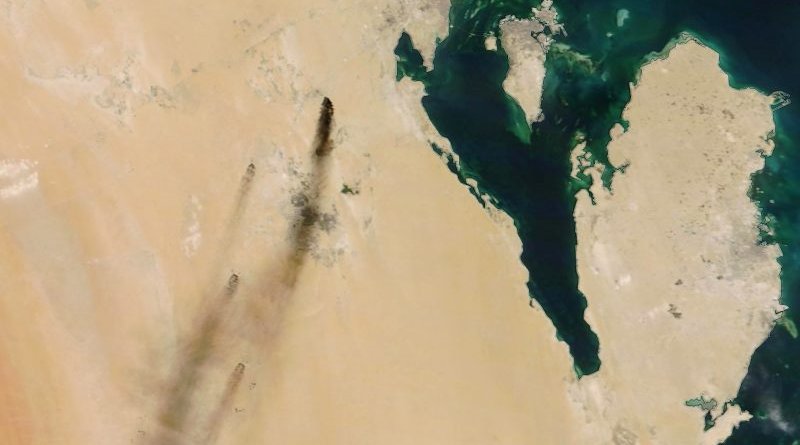Aramco Attack: India’s Future Options – OpEd
The attack on Saudi Aramco’s oil processing facility at Abqaiq has turned out to be less damaging than feared. It nevertheless holds lessons for India, which can begin securing itself against similar events in the future.
By Amit Bhandari*
Saudi Aramco has announced that its oil production will be fully restored by the end of September – this had been cut down by a massive 5.7 million barrels per day following a drone/missile attack on September 14. As a result of this announcement by Aramco, the price of oil, which had earlier shot up by 10% to $66-67 per barrel, has fallen to $63-64 per barrel – about 5% higher than the pre-strike level.
This is a remarkable recovery from what could have been a global disaster. It reinforces Aramco’s status as a reliable supplier, and underlines the fact that oil infrastructure is not a like a single pipe or tap, which once disrupted, takes a long time to restart. This infrastructure is built with a great deal of redundancy: it can take some hits and stay operational.
Yet, another crisis could flare again. In initial reactions, Saudi Arabia[3] and U.S. pointed at Iran as an enabler of the attack. If Iran is singled out as the perpetrator, a military response could cause further unrest.
This disruption holds some important lessons for India.
Worry about price, not supply
There were concerns – entirely misplaced – that India could face a shortage of oil because of the Saudi production cut. India has never faced a physical shortage of oil, ever – even during the Iran-Iraq war (1980-88) and Iraq’s invasion of Kuwait (1990). The risk to India has always been, and still is, the high price of oil. The Indian economy, which is driven by consumer spending, imports 1.4 billion barrels of oil annually. If the price of oil goes up by $10 per barrel, that’s $14 billion out of consumer pockets. On Monday (16 September), the price of oil briefly rose by $10 per barrel. Higher prices will damage India’s economy long before a physical shortage is felt.
Even now, the price of oil is $3-4 per barrel higher than its pre-attack level. This extra price is the risk premium that oil buyers such as India will pay for the geopolitical risk to oil supplies.
Warding off the risk
The attack on Aramco is not the first time a major oil supplier has faced such a massive setback. Iran, Iraq and Venezuela – major oil suppliers, all – have been hit by sanctions, insurgency and civil unrest which have upset their oil production. Natural disasters, such as the 2011 Japan earthquake, and tsunami, which caused the Fukushima nuclear accident, also affect energy markets. Technology can be yet another disruptor. India needs to act now to safeguard itself.
India has two options. First, India’s state-owned oil companies or sovereign wealth fund should invest in U.S. shale oil and Canadian oil sands companies – as a financial investment, not an operating asset. If oil prices rise in the future, the returns from these investments will protect India. This is futuristic geopolitical insurance, given India’s 85% dependence on imported oil.
Second, India must use active hedging in financial markets (futures and options) to protect itself against price spikes, a practice followed by many companies and even a few governments, such as Mexico. This can be done on an Indian commodity exchange – in Rupees. If oil is traded on an Indian exchange, then large facilities (of tens of millions of barrels) will have to be created for the physical settlement of trade. This doubles the benefit as the facility automatically becomes a Strategic Petroleum Reserve (SPR) for India.
Electric Vehicles: futuristic proposition
The disruption in Aramco’s production may present an opportunity for Electric Vehicle (EV) supporters to speed up the adoption of electric mobility. This is as yet premature. The EV supply chain is severely under-developed. EVs require lithium, cobalt and various rare earth minerals, which are not yet freely available. Nearly two-thirds of world lithium production comes from Australia, and similar shares of cobalt and rare-earths come from the Democratic Republic of Congo and China respectively. Oil, in contrast, has a more diverse supply base. The largest oil exporter, Saudi Arabia, accounts for only a little more than 10% of global oil production. The oil supply chain has shown itself to be robust over the last 70 years. EVs have a long catch-up to do.
*About the author: Amit Bhandari is Fellow, Energy and Environment Studies Programme, Gateway House.
Source: This article was written for Gateway House: Indian Council on Global Relations.

